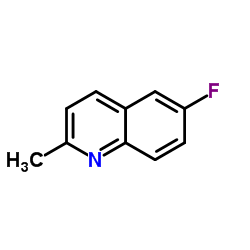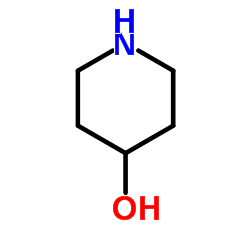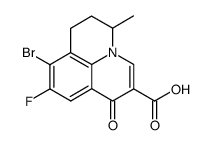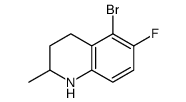124858-35-1
| Name | nadifloxacin |
|---|---|
| Synonyms |
9-Fluoro-8-(4-hydroxy-1-piperidinyl)-5-methyl-1-oxo-6,7-dihydro-1H,5H-pyrido[3,2,1-ij]quinoline-2-carboxylic acid
(±)-9-Fluoro-6,7-dihydro-8-(4-hydroxy-1-piperidinyl)-5-methyl-1-oxo-1H,5H-benzo[ij]quinolizine-2-carboxylic Acid Nadiflox Activon 1H,5H-Benzo[ij]quinolizine-2-carboxylic acid, 9-fluoro-6,7-dihydro-8-(4-hydroxy-1-piperidinyl)-5-methyl-1-oxo- Acuatim Jinofloxacin Nadifloxacin 9-Fluoro-8-(4-hydroxypiperidin-1-yl)-5-methyl-1-oxo-6,7-dihydro-1H,5H-pyrido[3,2,1-ij]quinoline-2-carboxylic acid Nadixa Nadoxin MFCD00865081 |
| Description | Nadifloxacin(OPC7251) is a topical fluoroquinolone antibiotic for the treatment of acne vulgaris. Target: AntibacterialNadifloxacin is a potent, broad-spectrum, quinolone agent approved for topical use in acne vulgaris and skin infections. Nadifloxacin inhibits the enzyme DNA gyrase that is involved in bacterial DNA synthesis and replication, thus inhibiting the bacterial multiplication. In vitro studies of nadifloxacin show potent and broad-spectrum antibacterial activity against aerobic Gram-positive, Gram-negative and anaerobic bacteria. Additionally, studies also suggest that the effectiveness of nadifloxacin in inflammatory acne lesions may be attributed to its inhibitory effect on pro-inflammatory cytokines like interleukin (IL)-1α, IL-6, and IL-8 which also play an important role in acne pathogenesis [1, 2]. |
|---|---|
| Related Catalog | |
| References |
| Density | 1.5±0.1 g/cm3 |
|---|---|
| Boiling Point | 624.9±55.0 °C at 760 mmHg |
| Melting Point | 245-247ºC (dec) |
| Molecular Formula | C19H21FN2O4 |
| Molecular Weight | 360.379 |
| Flash Point | 331.7±31.5 °C |
| Exact Mass | 360.148529 |
| PSA | 82.77000 |
| LogP | 1.95 |
| Vapour Pressure | 0.0±1.9 mmHg at 25°C |
| Index of Refraction | 1.669 |
| Storage condition | -20?C Freezer |
| RIDADR | NONH for all modes of transport |
|---|
|
~% 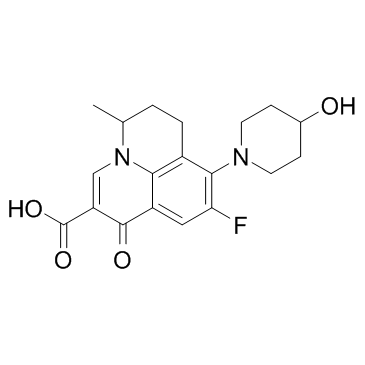
124858-35-1 |
| Literature: Chemical and Pharmaceutical Bulletin, , vol. 37, # 8 p. 2103 - 2108 |
|
~% 
124858-35-1 |
| Literature: Chemical and Pharmaceutical Bulletin, , vol. 37, # 8 p. 2103 - 2108 |
|
~24% 
124858-35-1 |
| Literature: Chemical and Pharmaceutical Bulletin, , vol. 37, # 8 p. 2103 - 2108 |
|
~% 
124858-35-1 |
| Literature: Chemical and Pharmaceutical Bulletin, , vol. 37, # 8 p. 2103 - 2108 |
| Precursor 5 | |
|---|---|
| DownStream 0 | |
